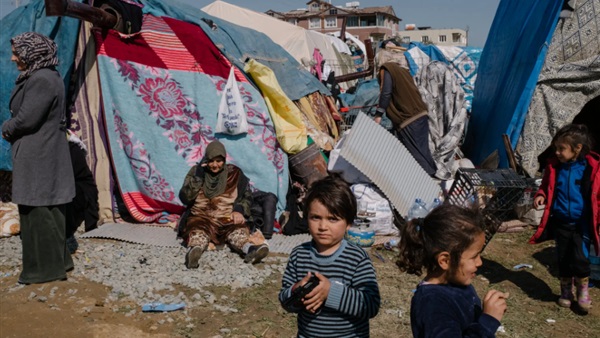Quake Survivors' Desperate Hunt for Shelter: Caves, Tents, and Shipping Containers Become Home

The earthquake that hit Turkey earlier this month has left
over one million people homeless, with thousands currently living in temporary
shelters such as gyms, hotels, dormitories and tents. Those who cannot access
these are relying on caves, shipping containers, or makeshift shelters for
survival. The earthquake has destroyed or damaged around 47,000 buildings, and
over 40,000 people have died as a result. Millions remain in need of food,
shelter, electricity, water, and toilets. Many have spent almost two weeks in
the open air, braving freezing weather.
The Turkish government, along with relief workers from
agencies like the Red Crescent and the United Nations refugee agency (UNHCR),
is doing everything possible to provide housing for the affected population.
However, the conditions of the temporary shelters are far from adequate. A park
in the city of Adiyaman, which is now a distribution point for survivors, is
full of tents set up by the Turkish national emergency management agency, AFAD.
However, not everyone can access these tents, and some are forced to live in
makeshift shelters, such as those built from plastic sheeting and wood beams.
For Syrian refugees in the quake zone in Turkey, the
conditions are even worse. Many of them have settled in overcrowded areas with
poor living conditions, such as tree nurseries or makeshift shelters in parks.
In the town of Besni, scores of women and children were packed into a tree
nursery’s three-room building. They received no aid from the government.
In response to growing public frustration over the
government’s relief efforts, President Recep Tayyip Erdogan has promised to
construct enough “high-quality and safe buildings within one year” to meet the
housing needs across the entire earthquake zone. In the meantime, the
government is relying on short-term solutions such as repurposed shipping
containers and a cruise ship that is set to arrive in the port city of
Iskenderun to accommodate thousands of people.
Many charities and aid groups are also providing help to the
affected population. Across the ruined landscape, in parks and other open
areas, tents and makeshift shelters displaying lettering from aid groups jut
out from the rubble. However, the situation remains dire for many people, and
there is a need for more resources and aid to help the affected population.







